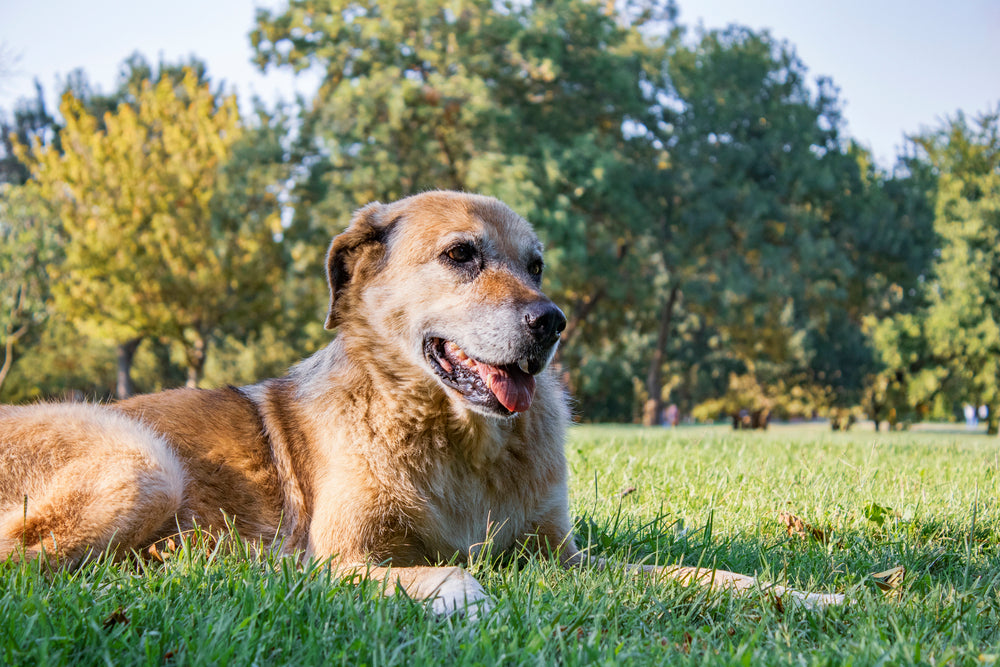One of the commonalities of older dogs is a tendency to eat less. On the surface, this makes sense because older dogs are inherently less active than young and moderately-aged dogs. Older dogs simply don’t require the same amount of calories as younger dogs. When everything is functioning as it should, dogs are voracious eaters. Still, it’s a natural part of aging—in humans as well as dogs—to experience a decline in appetite into the senior years.
The Problem With Not Eating Enough
It’s true that older dogs don’t need as many calories as they did when they were younger and more active. But in a twist of irony, older dogs need more nutrition than they used to. The American Kennel Club and veterinary experts say that senior canines need more protein than younger dogs, in order to maintain their muscle mass.
One doesn’t need to be a canine nutritionist to understand how important it is to maintain muscle mass. Loss of muscle leads to a condition known as sarcopenia. Sarcopenia is a risk factor for higher morbidity. Note that the progression of sarcopenia can be challenging to detect, since it often occurs beneath excess fat stores. The bottom line is that, while you may be thinking that your senior dog is overweight, they may actually be losing muscle mass due to not getting enough protein and other nutrients.
Tips to Get Your Older Dog to Eat
If you find that your senior dog isn’t eating as he or she used to, swift action is imperative. There are several things that you can do at home, starting today, in order to entice your beloved furry companion to eat as he should.

Allow On-demand Feeding
Dog owners are fully aware that dogs will eat and eat as long as the food is delicious and satisfying. That’s why most vets recommend that dog food bowls are only put down at designated feeding times and removed otherwise.
However, to encourage more eating by your senior dog, leave the dog food bowl down. This is called on-demand feeding. It allows your dog to eat when she wants. This is good for older dogs who may have a new rhythm to their hunger cycles. It enables them to eat when you might not even think of it, such as in the middle of the night.
Move the Food Bowl
Oftentimes, older dogs develop mobility issues. You’ll notice that they don’t run and jump as they used to. Your dog may not even bother to greet you at the door when you come home. By the same token, your dog may not be eating as much because of joint or muscle pain. At some point, they may feel it’s not worth the pain to drag themselves to the food bowl.
Try moving your dog’s food bowl closer to—or even next to—their favorite sleeping area. This will cut down their “dinner commute” and may facilitate more eating.
Read Our Article: Ways to Help Your Aging Dog with Mobility Issues
Encourage More Snacking
Just like people, older dogs may not enjoy large meals as much as they used to. They might prefer smaller nibbles and snacks during the day. And, just like people, snacking can quickly add up in the calorie department. Providing nutritious snacks is a great way to get your senior dog to consume more.
Jiminy’s has a great variety of nutritious treats that your older dog will love to nibble on. Packed with nutrients—and that all important protein!—Jiminy’s treats are delicious, natural and nutrient-dense.
Read Our Article: Best Alternative Protein Sources for Dogs
Mix it Up
If you had to eat the same meal every day for years on end, you might lose your appetite when you get older, too! Seriously, though, mixing up your dog’s usual diet with some more tantalizing offerings might whet your dog’s appetite to where they want to eat more.
Try one of Jiminy’s awesome dog food and dog treat bundles. This is a fun and affordable way to try different flavors and see which one becomes your older dog’s favorite! No matter how picky your senior dog is, you’re sure to find one or more choice dog foods at Jiminy’s that your furry best friend will love.
What to Keep in Mind For Your Older Dog’s Diet
To ensure the best diet for your older dog, keep the following points in mind:
- Keep track of how much your older dog eats by measuring portions and recording how much has been eaten. This will be helpful for your next veterinarian visit.
- Avoid junk food. Junk food can ruin a dog’s appetite for wholesome foods, just as it does with people.
- Choose nutrient-dense foods such as insect protein. Every bite should be packed with as many nutrients as possible, especially since older dogs eat less.
Jiminy's is here to help. From our collection of dog food and treats to our articles that help you learn more about how to improve your dog's well-being - we're here for you!
Read More Caring for Senior Dogs: Your Guide on What to Expect with an Aging Dog


